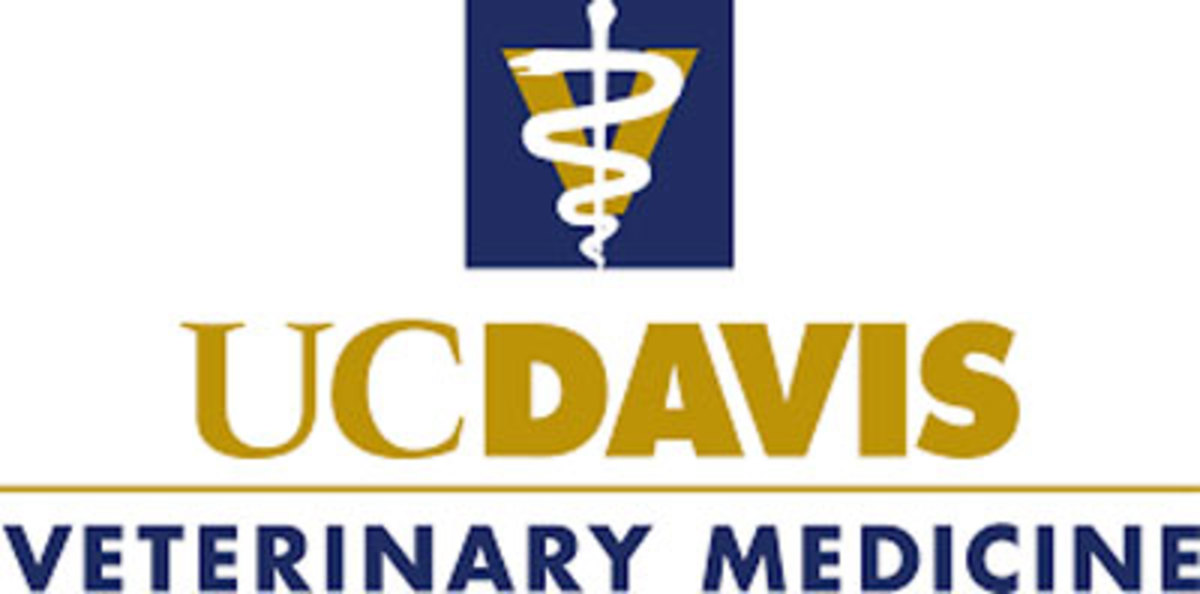
The Scoop From the Schools is a blog that brings news and information to those in the veterinary industry information from vet schools and equine research facilities. This month we feature news from Tufts, UC Davis and Kansas State University.

The Scoop From the Schools
is brought to you by Hilltop Bio.
Taking the Pain out of EA with Inhaled Lidocaine

Equine asthma (EA), presenting as either a niggling chronic cough or as severe as the classic heavy horse, negatively affects performance and quality of life. The most up-to-date treatment guidelines suggest the following medications for disease management (in addition to environmental management, of course):
- Corticosteroids;
- Bronchodilators;
- Omega-3 fatty acids; and
- Cromones (mast cell stabilizers).
Melissa R. Mazan, DVM, DACVIM, a professor of large animal internal medicine and director of theTufts Equine BAL Laboratory at the Cummings School of Veterinary Medicine at Tufts University, agrees that while corticosteroids and bronchodilators are “extraordinarily effective,” concerns surround the use of those medications.
She said, “Systemic corticosteroids are not costly to the pocketbook, but they are associated with laminitis and cause systemic problems such as poor wound healing, liver disease and worsening of metabolic disease.”
Prolonged treatment with corticosteroids can also suppress the hypothalamic-pituitary-adrenal (HPA) axis.
“Bronchodilators, when used on their own without corticosteroids, lose their effectiveness quickly, and bronchodilators such as Ventipulmin cause systemic problems such as cardiac arrhythmias and are not meant to be used for more than 2 weeks at a time,” added Mazan.
As such, interest in inhaled medications has increased markedly in recent years. Many studies support inhaled corticosteroid therapy using medications that are either prohibitively expensive or unavailable in the United States. As an alternative, two recent studies looked at inhaled dexamethasone as a more financially feasible option. Unfortunately, neither study found that inhaled dexamethasone was an effective therapy for EA, and inhaled dexamethasone inhibited the HPA axis.
These disappointing results leave researchers, including Mazan, huffing in frustration, but not deterred.
Mazan explained, “We have a large clinical population of horses who are metabolically fragile—horses with equine Cushing’s disease or equine metabolic syndrome—who cannot be treated easily or safely with corticosteroids. While looking through PubMed for alternative treatments for the sister disease, asthma, in humans, I noted that nebulized lidocaine had been successfully used to treat refractory cough and airway inflammation.”
That finding was interesting to Mazan because equine veterinarians already use IV lidocaine routinely in post-op patients and in laminitis cases to address both pain and inflammation.
“It seemed logical that if we nebulized lidocaine to horses with EA, we would be directly targeting the area that was causing the problem,” Mazan said.
As described in a TuftsNow article, Mazan and colleagues received funding from a Boehringer Ingelheim equine research award and the Grayson-Jockey Club Foundation to study inhaled lidocaine for client-owned horses with EA.
“The results are encouraging in that there were no adverse effects,” said Mazan. “Horses tolerate the lidocaine well, and horses treated with lidocaine using a Flexineb had an improvement in clinical score, tracheal mucus score and BAL airway inflammation.”
Additional studies are currently in progress, and preliminary data will be presented at the Veterinary Emergency and Critical Care Society 2021 Annual Meeting.
Looking for more information on EA and inhalation therapy? Take a look at some of these articles:
- Couëtil, L.L.; Cardwell, J.M.; Gerber, V., et al. Inflammatory airway disease of horses—revised consensus statement. J Vet Intern Med. 2016:30(2):503-15.
- de Wasseige, S.; Picott,e K.; Lavoie, J-P. Nebulized dexamethasone sodium phosphate in the treatment of horses with severe asthma. J Vet Intern Med. 2021;35(3):1604-1611.
- Bullone, M.; Vargas, A.; Elce, Y., et al. Fluticasone/salmeterol reduces remodelling and neutrophilic inflammation in severe equine asthma. Sci Rep. 2017;7(1):8843.
- Pirie, R.S.; Mueller, H-W.; Engel, O., et al. Inhaled ciclesonide is efficacious and well tolerated in the treatment of severe equine asthma in a large prospective European clinical trial. Equine Vet J. In Press.
UC Davis Researchers PET Racehorses at the Track

Thoroughbreds at Golden Gate Fields in Berkeley, California, now have the luxury of being able to undergo a PET (positron emission tomography) scan to image their limbs while under light sedation only. According to a report released by UC Davis’ School of Veterinary Medicine, this new scanner, dedicated for horse limb imaging, eliminates time, costs and health risks associated with the general anesthesia previously needed for PET imaging.
“Put simply, PET is a three-dimensional bone scan with greater detail than X-ray. PET can find changes not recognized with X-ray and can also be used to better understand the meaning of X-ray findings,” explained Mathieu Spriet, DVM, MS, DACVR, DECVDI, DACVR-EDI, professor of diagnostic imaging, University of California, Davis.
He added, “PET provides information about bone activity, detecting areas of bone turnover that allow us to identify early injuries.”
In addition to diagnosing injuries, PET allows veterinarians to monitor healing and assess joint health for horses in training.
“This technology appears particularly useful for imaging the fetlock joint, which is the most common site of catastrophic injuries in Thoroughbreds,” Spriet said.
PET scanning has already proven itself a popular tool at California’s sister track, Santa Anita Park. Since installing a PET scanner there in 2019, more than 300 horses have been imaged.
Here are some details regarding the PET scanner:
- The scanner is small and portable, and is currently being shuttled between UC Davis and Golden Gate Fields;
- All scans are performed by a team led by Spriet;
- All 4 fetlocks in a horse can be imaged in a mere 15-30 minutes;
- Racehorses scans are performed at the equine hospital at Golden Gate Fields where a barn was newly installed to hold six horses at a time;
- Up to 12 scans can be performed in a single day.
To book a PET scan, contact the UC Davis large animal clinic at 530 752 0290 or e-mail vmthlac@ucdavis.edu. PET imaging is also available at UC Davis Veterinary Medical Center for non-racehorses.
Generating Data for Regenerative Therapies

In light of the positive results shown following stem cell therapy in horses, Kansas State University researchers are actively inviting horse owners to participate in a clinical trial involving bone marrow-derived equine stem cells (MSC) to treat musculoskeletal injuries in horses.
According to the university’s press release, “Current research appears to demonstrate that horses treated with MSC therapy have shown substantial improvements in clinical signs and case outcomes.”
This project is led by Dylan Lutter DVM, MS, DACVS-LA, CERP, CAC, Equine Performance Medicine and Surgery from the University’s Veterinary Health Center. Lutter relayed, “The overall purpose is to generate pilot data on the effect of a single dose of allogenic bone marrow derived MSCs on clinical cases of musculoskeletal injuries.”
The study has a broad scope, enrolling horses with any one of five following musculoskeletal injury categories:
- Osteoarthritis;
- Tendon/ligament injury;
- Laminitis;
- Navicular syndrome; and
- Traumatic wounds.
Outcomes of horses with these injuries treated with stem cells will be compared to cases managed with more conventional therapies not involving any biologic or regenerative therapy.
“The goal is to enroll up to 30 horses per treatment group in each category,” Lutter said. “If the MSC treatment is successful, similar to what has been reported in previous studies with MSCs, this study will help horses by improving case outcomes and returning more horses to their intended use than previously possible with conventional therapy.”
Interested veterinarians or horse owners can contact Lutter at dlutter@vet.k-state.edu or by calling him KSU VHC Large Animal Receptionist at 785-532-5700.
Any horse falling into one of the above-listed categories is eligible for enrollment. The only requirement is that Lutter must evaluate the horses and consult with the owners prior to offering enrollment so that the best course of treatment can be recommended.
“The study enrollment period will close for each group once the maximum number of horses has been reached. I anticipate this to take several years for some of the groups to fill up and plan to initiate additional clinical trials staggered over time so that this service may continue to be offered to interested clients,” Lutter added.

The Scoop From the Schools
is brought to you by Hilltop Bio.









